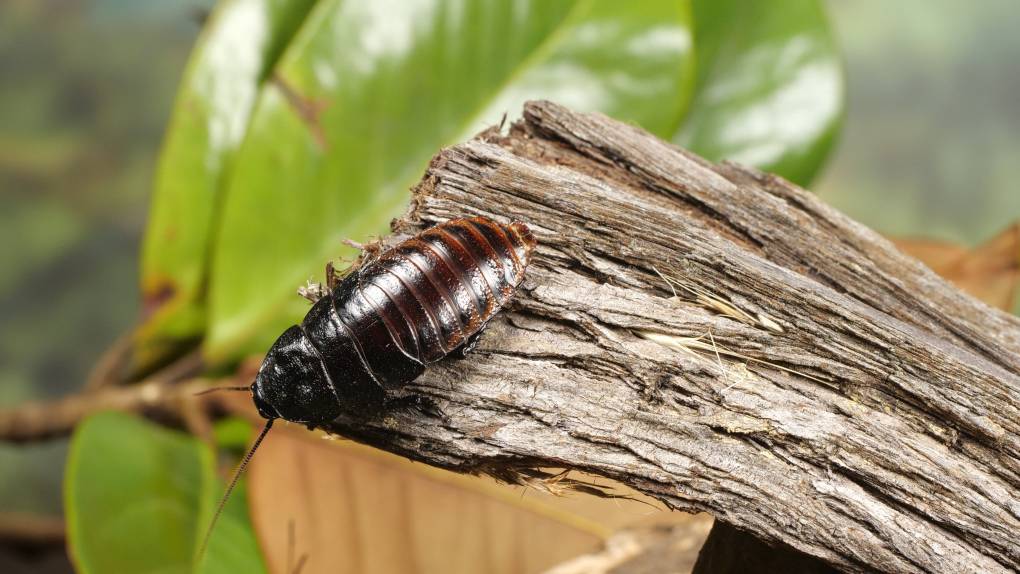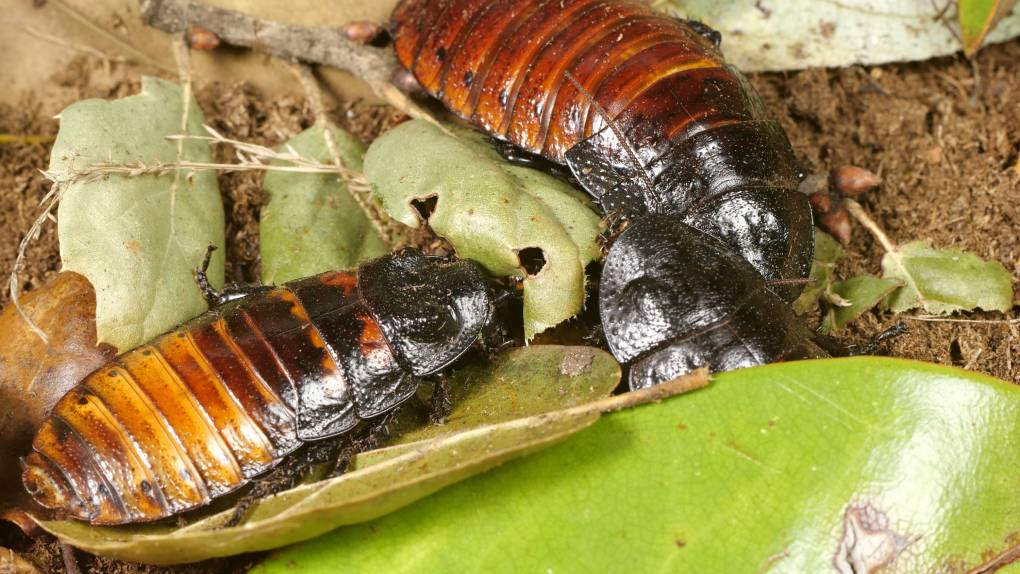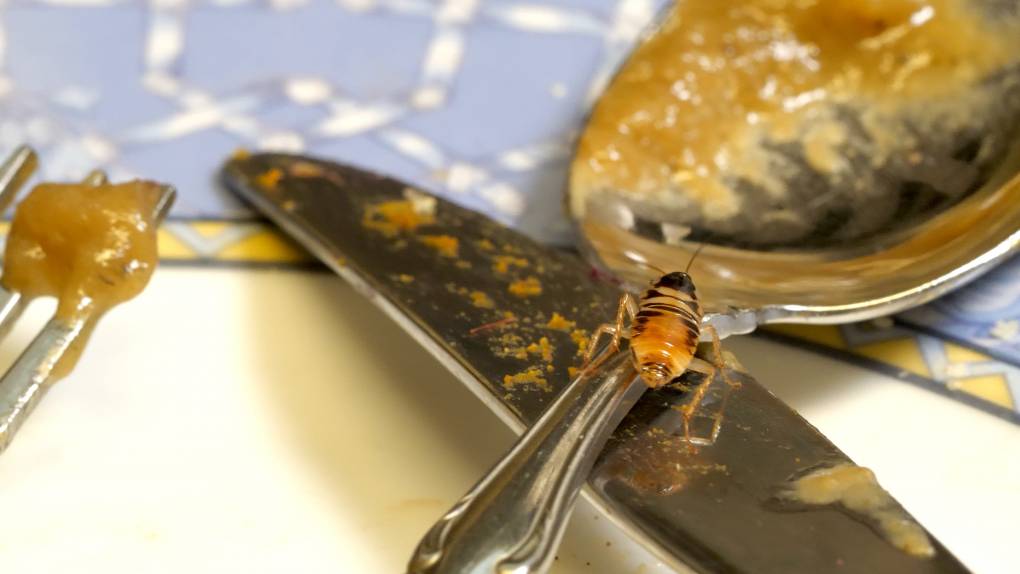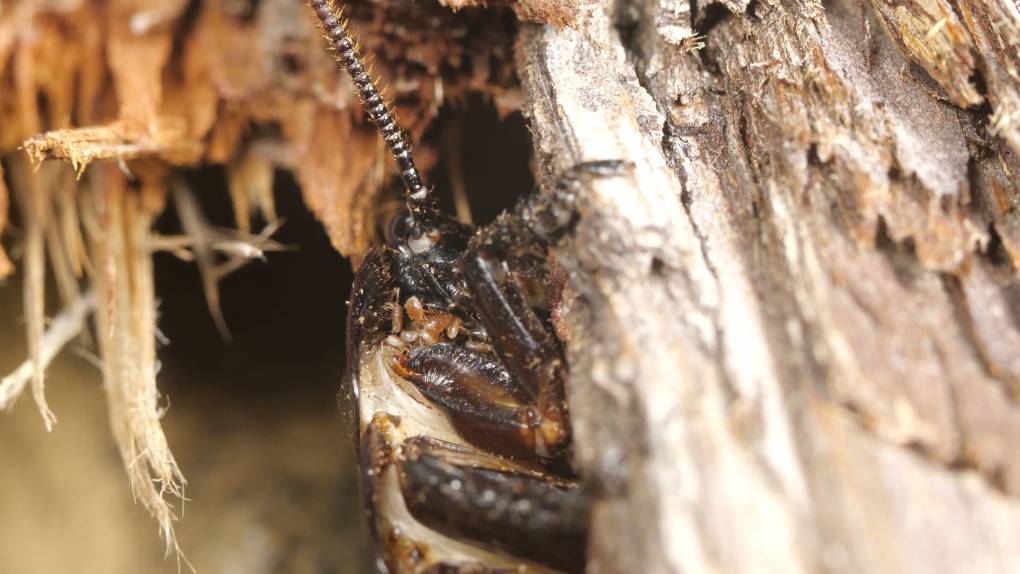You Wish You Had Mites Like This Hissing Cockroach
As the weather starts to warm and cold days give way to balmier, sunny days, one rite of spring returns every year, just like spring flowers: cockroaches.

Most people run to buy a can of bug spray or to call the exterminator when they see the scurrying little insects in their kitchens or outside their homes.
But not all roaches are pests. Some are pets – like the Madagascar hissing cockroach.
They can be bought at pet stores or online for $5 or less. They don’t bite and don’t carry diseases. They are also much larger than the run-of-the-mill roach, with adults averaging about 3 inches long. They live up to five years. They are slow-moving and mellow – kind of like an old tabby cat. But with antennae. And an appetite for fresh vegetables.
“I think it’s just a combination of size, cheapness, and they’re usually docile,” said Joshua Benoit, an assistant professor of biological sciences at the University of Cincinnati. “They’re not aggressive, they don’t move fast. A combination of all those factors probably makes them pretty popular.”
Native to the remote island off the Eastern coast of Africa, they’re famous for a cool sound. They hiss.

Most other insects, like crickets and some beetles, make noises by rubbing body parts together, known as stridulation. Insects breathe using internal air sacs and tubes that take oxygen to all over their bodies. On the outside of their bodies, they have openings called spiracles. If a hissing cockroach force air through these spiracles rapidly, then it makes that signature sound.
“As far as hissing, I can’t think of any other kinds of insect that hisses. I think you have to be kind of large to do that, and maybe a small bug couldn’t do it,” said Steve Heydon, senior museum scientist at the Bohart Museum of Entomology at UC Davis.
The huge roaches are a big hit at the museum, especially with kids. It has dozens on hand.
“The males are territorial, so they’ll set up little territories,” Heydon said. “If another male comes along, then they’ll hiss and they’ll kind of ram into each other. Kind of like little deer fighting, you know?”
Then the males also court the females with another hiss. Kind of a softer, gentler hiss. And then there’s also an alarm hiss.
“If you pick them up, they’ll hiss like crazy,” Heydon said. “Just to do something unexpected in the hopes that they can get dropped and they’ll have another chance to get away.”
Madagascar hissing cockroaches don’t pose a health risk because they’re cleaner than pest cockroaches, like the German or brown-banded variety.

Nocturnal scavengers, the pest cockroaches rummage for food during the witching hours in your kitchen, bathrooms, trash and drains. They’re not that discriminating when it comes to what they eat. A World Health Organization report noted that they’ll feed on just about anything, in addition to human food: “their own cast-off skins, dead and crippled cockroaches, fresh and dried blood, excrement, sputum, and the fingernails and toenails of babies and sleeping or sick persons.”
One reason their big exotic hissing cousins are cleaner? They’ve got special mites that live on them their entire lives. These tiny cleanup artists keep them tidier than other cockroaches.
“Most people assume that they’re bad, because people assume you don’t want to get mites,” Benoit said.
“But they’re actually symbiotic. They keep the surface of the cockroaches clean. They live about twice as long. And the mites are obligate, so they can’t live anywhere else, at least as far as we know, except on the surface of the cockroach.”

Benoit co-authored a study several years ago that showed these tiny mites eat the saliva and organic debris that fosters mold growth on the cockroaches’ bodies – thus potentially reducing allergic responses among humans who handle them.
So don’t be shy about picking up a Madagascar hissing cockroach. You’ll often find them at museums and zoos for interactive educational activities. The Bohart Museum of Entomology shows off its collection regularly during educational days that are open to the public, like its upcoming Biodiversity Museum Day on Feb. 15. Or stop by your local pet shop if you’re looking for a more hypoallergenic, low-maintenance critter than Fido or Fifi.
“If someone accidentally kills one, you could probably replace it for the kids,” Benoit joked. “They would never know.”
